Latest Posts by cheeryblueheart - Page 3
Tip Sheet: Business and Dining Etiquette
This post and any other later posts labeled as tips sheet come from a college website I found while searching around about jobs. I’m bringing it to you all to save you the hassle. Enjoy!
How you conduct yourself and treat others in a business or dining setting speaks strongly of who you are as a professional. Research worldwide tips and strategies before traveling as different cultures have different protocols.
General Tips
Use titles (Mr. Ms. Dr.), not first names until instructed to do so.
Be on time or 5-15 minutes early. Earlier than that can be awkward and invasive.
Prepare for meeting, developing an agenda if you are leading.
Do not interrupt meeting agendas, but in a timely manner, be confident in concisely sharing on-topic ideas/opinions.
Do not get intoxicated at work functions.
Do not use profanity or tell off-colored jokes.
Do not engage in office gossip.
Bring a positive attitude and leave personal drama at home.
Do not air work-related frustrations via social media (e.g. These people make me sick. #ISITFRIDAYYET)
How to Approach a Group
Present yourself with confidence.
Smile and extend dominant hand.
State your name (and company).
Know how to introduce yourself (and company) in 15 to 30 seconds.
Avoid “closed” triads: two people facing shoulder to shoulder are likely having a private conversation.
Do not fold your arms or put them in your pockets.
Greetings
Hi, Hey, Yo, What’s up?, What’s going on? are not appropriate.
Hello is appropriate.
Introducing Yourself
It is your duty to introduce yourself.
Look people in the eyes and smile in order to seem confident and approachable.
Name tags should be placed high on right shoulder.
When should you introduce yourself?
When you realize someone does not recognize you.
When attending a business or social gathering.
When seated next to someone.
When person introducing you forgets your name.
When it is a friend of a friend whom you are talking to.
Introducing Others
Use proper titles when introducing others.
Omit titles when introducing people of same rank and position.
Never introduce a co-worker/superior by first name.
Introduce person lowest on the totem pole to the one highest.
The name of the person of greater authority is spoken first.
This means you look at the most “important person” and say, “Ms. Important, I would like to introduce you to Mr. Student, an intern in our IT department. Mr. Student, this is Mr. Important, the director of technical marketing.”
When dealing with people outside the company, clients are more important than company employees, and hiring managers are more important than job seekers.
If you are seated while being introduced, stand to shake hands.
Have a firm handshake, but avoid death grips.
Tell something about the person whom you introduce.
During the Conservation
Learn how to make small talk.
Be current on domestic and international events. If you’re not and the topic is brought up, say something along the lines of “I’m not familiar with the topic but I would enjoy learning more about it.”
Know what events impact your company or client’s.
Ask questions that focus on other person, not you.
Do not interrupt and/or finish people’s sentences.
Avoid conversations about health or diet habits, cost of things, personal life, gossip, off-color jokes and controversial issues.
Don’t gaze around room in a conversation—it’s rude and makes other person feel insignificant.
Do not touch others unless you know them well.
Ending a Conversation
Do not just walk away if you see someone more interesting— ALWAYS make a closing statement before moving on:
“Please excuse me. It was nice talking with you.”
“It was really a pleasure to meet you. I look forward to seeing you again soon.”
“I enjoyed talking with you. I hope to see you soon.”
Summarize, “Oh, it looks like you have a fascinating job and I wish you good luck on your project.”
If graceful disengagement doesn’t work, be more direct: “I see it is really getting late and I really must go,” then back up physically. As a last result, say a parting statement while you are shaking hands and saying good-bye.
Business Cards
Always have enough and carry in a case.
Should not be wrinkled, written on, outdated or dirty.
Present the card with the print facing the recipient.
Your name should be the largest print on the card.
Don’t write on business cards in front of others.
Don’t exchange business cards while dining.
Never pass them out like you are dealing cards.
It is polite to comment on card before putting it away rather than immediately stashing it in a pocket without looking at it
If someone offers you their business card, offer yours in return
Before offering your business card, first say, “May I give you my card?”
Do not force your card on anyone or offer it too early in a conversation
Let senior executives ask for your card. Do not offer it to them.
Meetings/Networking Events
It is polite to offer to pay if asked to a lunch/dinner meeting. However, whoever extends the invitation typically pays.
Know why you are attending and who you want to meet.
Bring business cards; Remember you represent your company.
Do not carry a bag or notebook that fills your hands.
Step to the right when you enter room, pausing to first observe.
Greet hosts first, if possible but do not monopolize their time.
Introduce yourself to others, not just talking to people you know.
Do not immediately head for the bar or food; don’t go hungry.
Avoid foods that are messy or can’t be eaten in one bite.
Hold food or drink in left hand to leave right hand open.
Write a thank-you note within 24 hours.
Work Relationships:
Co-workers
Cooperate and develop a relationship of mutual support.
Focus on positive qualities and potential of co-workers (strengths, not weaknesses).
Be friendly, but do not join a clique.
Spend time observing how people act, who performs well and who takes a positive view toward the job and organization.
Beware of the gripers and avoid office gossip.
Do not talk about co-workers behind their backs.
Voice concerns, challenges and accomplishments.
Remember that a peer may someday be your boss or you his.
Be nice, polite and friendly to everyone, including individuals who work outside of your department.
Observe organization’s gift giving policy and be discreet when exchanging gifts if only exchanging with a few coworkers. Work Relationships:
Supervisors
Approach tasks with a willing attitude.
Enthusiastically complete “grunt” assignments.
Demonstrate poise and maturity in everything you do.
Ensure quality work is completed on-time.
Supervisors are your ally, not your enemy.
Supervisors train and develop; they aren’t best friends.
Do not ask supervisor for personal and financial advice.
Cell Phones
Turn your phone off during meetings.
Invest in a watch so you don’t check phone for time.
Avoid answering in restaurants. If expecting important call, let those you are dining with know, and leave table to answer.
In public, be aware of voice volume and move at least two arm lengths away from those around you (or out of the room).
The people you are with should take precedence over calls.
If you expect a call that can’t be postponed, alert your companions ahead of time.
Public phone conversations are not private.
Email Etiquette
Craft a compelling subject line.
Treat email like a business letter; always be professional.
Keep it short and simple.
Use proper spelling, grammar and punctuation.
Never send an email when you’re angry.
Email is NOT confidential and can be forwarded.
Read it and check your spelling before sending it.
Confirm attachment you intended to attach is attached.
Answer an email within 24 hours.
General Dining Etiquette
Do not order foods that are eaten with your hands.
Pass food from left to right (counterclockwise).
If asked for the salt or pepper, pass both.
Never season food before tasting it.
Food is served from the left, dishes removed from the right.
Butters, spreads or dips should be transferred to your serving dish before spreading or eating.
Do not ask for a “to-go box” unless it is an informal situation.
For hard to scoop items, use bread, not your finger, to push items onto fork.
If hot food is burning mouth, discretely drink something cool.
Napkins belong in your lap.
If you leave table, loosely fold your napkin (do NOT refold your napkin or wad it up) and place it beside your dinner plate.
Meeting materials or briefcases should be left under your chair until it is time to discuss business.
Do not ask to taste or offer to let others taste your food.
Do not blow nose at the table. Politely excuse yourself.
Casual Dining Exceptions
You may order foods that are eaten with your hands.
When sharing chips and salsa, you don’t have to transfer salsa to your plate, but do not double dip.
Leaving a Tip
Fifteen to 20 percent of the bill total is customary, but for exemplary service, a greater percentage is accepted.
For poor service, ask to speak to the manager; still tip.
Place Setting Tips
General rule: use silverware from outside in as meal progresses.
When finished, do not push plate away. Instead place fork and knife across the center of the plate, handles to the right.
Between bites, your fork and knife are placed on the plate, handles to the right, not touching the table.

1. Napkin
2. Salad Fork
3. Dinner fork
4. Dessert Utensil
5. Dinner Plate
6. Dinner Knife
7. Teaspoon
8. Bread Plate
9. Bitter Knife
10. Water glass
11. Wine Glass
One of My Most Favorite Psalm. 🌻🌻
a friend asked me to read this....
New International Version (NIV)
Psalm 103 Of David.
1 Praise the LORD, my soul; all my inmost being, praise his holy name. 2 Praise the LORD, my soul, and forget not all his benefits— 3 who forgives all your sins and heals all your diseases, 4 who redeems your life from the pit and crowns you with love and compassion, 5 who satisfies your desires with good things so that your youth is renewed like the eagle’s.
6 The LORD works righteousness and justice for all the oppressed.
7 He made known his ways to Moses, his deeds to the people of Israel: 8 The LORD is compassionate and gracious, slow to anger, abounding in love. 9 He will not always accuse, nor will he harbor his anger forever; 10 he does not treat us as our sins deserve or repay us according to our iniquities. 11 For as high as the heavens are above the earth, so great is his love for those who fear him; 12 as far as the east is from the west, so far has he removed our transgressions from us.
13 As a father has compassion on his children, so the LORD has compassion on those who fear him; 14 for he knows how we are formed, he remembers that we are dust. 15 The life of mortals is like grass, they flourish like a flower of the field; 16 the wind blows over it and it is gone, and its place remembers it no more. 17 But from everlasting to everlasting the LORD’s love is with those who fear him, and his righteousness with their children’s children— 18 with those who keep his covenant and remember to obey his precepts.
19 The LORD has established his throne in heaven, and his kingdom rules over all.
20 Praise the LORD, you his angels, you mighty ones who do his bidding, who obey his word. 21 Praise the LORD, all his heavenly hosts, you his servants who do his will. 22 Praise the LORD, all his works everywhere in his dominion.
Praise the LORD, my soul.
Living His Word

Don’t brag about tomorrow, since you don’t know what the day will bring. Let someone else praise you, not your own mouth– a stranger, not your own lips. - Proverbs 27:1-2
Humility is an essential and fundamental quality of the Christian life. It is essential and fundamental because of the position human beings have in the great scheme of things. God is the sovereign ruler over all creation. We exist in the creation that He made. Although He made us in His image and placed us in a position above all other creatures (Genesis 1:26-28), we are still subject to His divine providential control. He determines the story of creation and He determines the story of our lives within His creation.
True humility, then, recognizes and acknowledges the subservient place we have in the great scheme of things. Although we may think we know what the day will bring, we can make no guarantees. As the Proverb says, “We can make our plans, but the LORD determines our steps” (Proverbs 16:9). And that’s why James warned us not to boast about tomorrow. Instead, he said we should say, ’“If the Lord wants us to, we will live and do this or that”’ (James 4:15). After all, unlike the sovereign and eternal God who controls all things, our lives are “like the morning fog–it’s here a little while, then it’s gone” (James 4:14).
The true humility that recognizes and acknowledges our subservient place also knows that boasting about one’s accomplishments does not properly reflect our status in reality. Although there may be occasions when public acknowledgment of one’s accomplishments is necessary for personal vindication or for the edification of others, as was the case with Paul and the Corinthian church (II Corinthians 11:12), gratuitous boasting has no place in God’s Kingdom. We are dependent creatures. We are dependent upon God for everything we have and everything we are. Instead of boasting about ourselves, then, we should boast about God (II Corinthians 10:17).
Paul said, “When people commend themselves, it doesn’t count for much. The important thing is for the Lord to commend them.” (II Corinthians 10:18). One of the ways that the Lord can do this is by having others ? strangers even ? praise us. And in the next life, of course, the Lord Himself will do the job personally (I Corinthians 4:5).
We don’t have to brag about tomorrow or praise ourselves. God can see to it that we get the acknowledgement and the encouragement we need.
© 2016 by Bible League International

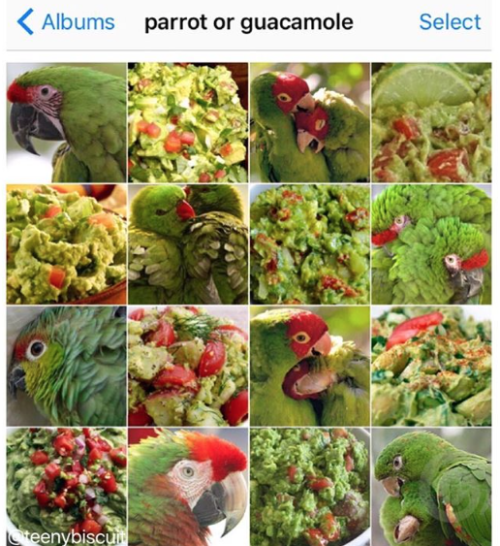







By Karen Zack (@teenybiscuit)
A scorpion, not knowing how to swim, asked a frog to carry it across the river. “Do I look like a fool?” said the frog. “You’d sting me if I let you on my back!”
“Be logical,” said the scorpion. “If I stung you I’d certainly drown myself.”
“That’s true,” the frog acknowledged. “Climb aboard, then!” But no sooner than they were halfway across the river, the scorpion stung the frog, and they both began to thrash and drown. “Why on earth did you do that?” the frog said morosely. “Now we’re both going to die.”
“I can’t help it,” said the scorpion. “It’s my nature.”
___
…But no sooner than they were halfway across the river, the frog felt a subtle motion on its back, and in a panic dived deep beneath the rushing waters, leaving the scorpion to drown.
“It was going to sting me anyway,” muttered the frog, emerging on the other side of the river. “It was inevitable. You all knew it. Everyone knows what those scorpions are like. It was self-defense.”
___
…But no sooner had they cast off from the bank, the frog felt the tip of a stinger pressed lightly against the back of its neck. “What do you think you’re doing?” said the frog.
“Just a precaution,” said the scorpion. “I cannot sting you without drowning. And now, you cannot drown me without being stung. Fair’s fair, isn’t it?”
They swam in silence to the other end of the river, where the scorpion climbed off, leaving the frog fuming.
“After the kindness I showed you!” said the frog. “And you threatened to kill me in return?”
“Kindness?” said the scorpion. “To only invite me on your back after you knew I was defenseless, unable to use my tail without killing myself? My dear frog, I only treated you as I was treated. Your kindness was as poisoned as a scorpion’s sting.”
___
…“Just a precaution,” said the scorpion. “I cannot sting you without drowning. And now, you cannot drown me without being stung. Fair’s fair, isn’t it?”
“You have a point,” the frog acknowledged. “But once we get to dry land, couldn’t you sting me then without repercussion?”
“All I want is to cross the river safely,” said the scorpion. “Once I’m on the other side I would gladly let you be.”
“But I would have to trust you on that,” said the frog. “While you’re pressing a stinger to my neck. By ferrying you to land I’d be be giving up the one deterrent I hold over you.”
“But by the same logic, I can’t possibly withdraw my stinger while we’re still over water,” the scorpion protested.
The frog paused in the middle of the river, treading water. “So, I suppose we’re at an impasse.”
The river rushed around them. The scorpion’s stinger twitched against the frog’s unbroken skin. “I suppose so,” the scorpion said.
___
A scorpion, not knowing how to swim, asked a frog to carry it across the river. “Absolutely not!” said the frog, and dived beneath the waters, and so none of them learned anything.
___
A scorpion, being unable to swim, asked a turtle (as in the original Persian version of the fable) to carry it across the river. The turtle readily agreed, and allowed the scorpion aboard its shell. Halfway across, the scorpion gave in to its nature and stung, but failed to penetrate the turtle’s thick shell. The turtle, swimming placidly, failed to notice.
They reached the other side of the river, and parted ways as friends.
___
…Halfway across, the scorpion gave in to its nature and stung, but failed to penetrate the turtle’s thick shell.
The turtle, hearing the tap of the scorpion’s sting, was offended at the scorpion’s ungratefulness. Thankfully, having been granted the powers to both defend itself and to punish evil, the turtle sank beneath the waters and drowned the scorpion out of principle.
___
A scorpion, not knowing how to swim, asked a frog to carry it across the river. “Do I look like a fool?” sneered the frog. “You’d sting me if I let you on my back.”
The scorpion pleaded earnestly. “Do you think so little of me? Please, I must cross the river. What would I gain from stinging you? I would only end up drowning myself!”
“That’s true,” the frog acknowledged. “Even a scorpion knows to look out for its own skin. Climb aboard, then!”
But as they forged through the rushing waters, the scorpion grew worried. This frog thinks me a ruthless killer, it thought. Would it not be justified in throwing me off now and ridding the world of me? Why else would it agree to this? Every jostle made the scorpion more and more anxious, until the frog surged forward with a particularly large splash, and in panic the scorpion lashed out with its stinger.
“I knew it,” snarled the frog, as they both thrashed and drowned. “A scorpion cannot change its nature.”
___
A scorpion, not knowing how to swim, asked a frog to carry it across the river. The frog agreed, but no sooner than they were halfway across the scorpion stung the frog, and they both began to thrash and drown.
“I’ve only myself to blame,” sighed the frog, as they both sank beneath the waters. “You, you’re a scorpion, I couldn’t have expected anything better. But I knew better, and yet I went against my judgement! And now I’ve doomed us both!”
“You couldn’t help it,” said the scorpion mildly. “It’s your nature.”
___
…“Why on earth did you do that?” the frog said morosely. “Now we’re both going to die.”
“Alas, I was of two natures,” said the scorpion. “One said to gratefully ride your back across the river, and the other said to sting you where you stood. And so both fought, and neither won.” It smiled wistfully. “Ah, it would be nice to be just one thing, wouldn’t it? Unadulterated in nature. Without the capacity for conflict or regret.”
___
“By the way,” said the frog, as they swam, “I’ve been meaning to ask: What’s on the other side of the river?”
“It’s the journey,” said the scorpion. “Not the destination.”
___
…“What’s on the other side of anything?” said the scorpion. “A new beginning.”
___
…”Another scorpion to mate with,” said the scorpion. “And more prey to kill, and more living bodies to poison, and a forthcoming lineage of cruelties that you will be culpable in.”
___
…”Nothing we will live to see, I fear,” said the scorpion. “Already the currents are growing stronger, and the river seems like it shall swallow us both. We surge forward, and the shoreline recedes. But does that mean our striving was in vain?”
___
“I love you,” said the scorpion.
The frog glanced upward. “Do you?”
“Absolutely. Can you imagine the fear of drowning? Of course not. You’re a frog. Might as well be scared of breathing air. And yet here I am, clinging to your back, as the waters rage around us. Isn’t that love? Isn’t that trust? Isn’t that necessity? I could not kill you without killing myself. Are we not inseparable in this?”
The frog swam on, the both of them silent.
___
“I’m so tired,” murmured the frog eventually. “How much further to the other side? I don’t know how long we’ve been swimming. I’ve been treading water. And it’s getting so very dark.”
“Shh,” the scorpion said. “Don’t be afraid.”
The frog’s legs kicked out weakly. “How long has it been? We’re lost. We’re lost! We’re doomed to be cast about the waters forever. There is no land. There’s nothing on the other side, don’t you see!”
“Shh, shh,” said the scorpion. “My venom is a hallucinogenic. Beneath its surface, the river is endlessly deep, its currents carrying many things.”
“You - You’ve killed us both,” said the frog, and began to laugh deliriously. “Is this - is this what it’s like to drown?”
“We’ve killed each other,” said the scorpion soothingly. “My venom in my glands now pulsing through your veins, the waters of your birthing pool suffusing my lungs. We are engulfing each other now, drowning in each other. I am breathless. Do you feel it? Do you feel my sting pierced through your heart?”
“What a foolish thing to do,” murmured the frog. “No logic. No logic to it at all.”
“We couldn’t help it,” whispered the scorpion. “It’s our natures. Why else does anything in the world happen? Because we were made for this from birth, darling, every moment inexplicable and inevitable. What a crazy thing it is to fall in love, and yet - It’s all our fault! We are both blameless. We’re together now, darling. It couldn’t have happened any other way.”
___
“It’s funny,” said the frog. “I can’t say that I trust you, really. Or that I even think very much of you and that nasty little stinger of yours to begin with. But I’m doing this for you regardless. It’s strange, isn’t it? It’s strange. Why would I do this? I want to help you, want to go out of my way to help you. I let you climb right onto my back! Now, whyever would I go and do a foolish thing like that?”
___
A scorpion, not knowing how to swim, asked a frog to carry it across the river. “Do I look like a fool?” said the frog. “You’d sting me if I let you on my back!”
“Be logical,” said the scorpion. “If I stung you I’d certainly drown myself.”
“That’s true,” the frog acknowledged. “Come aboard, then!” But no sooner had the scorpion mounted the frog’s back than it began to sting, repeatedly, while still safely on the river’s bank.
The frog groaned, thrashing weakly as the venom coursed through its veins, beginning to liquefy its flesh. “Ah,” it muttered. “For some reason I never considered this possibility.”
“Because you were never scared of me,” the scorpion whispered in its ear. “You were never scared of dying. In a past life you wore a shell and sat in judgement. And then you were reborn: soft-skinned, swift, unburdened, as new and vulnerable as a child, moving anew through a world of children. How could anyone ever be cruel, you thought, seeing the precariousness of it all?” The scorpion bowed its head and drank. “How could anyone kill you without killing themselves?”
me, going to bed at 1am: okay so we can fit the plot twist into chapter fourteen and introduce the love interest a couple chapters before that, and their first line is also going to be the last line of the book but in different context as mirroring, and we’re going to switch perspectives halfway through
me, opening my laptop in the morning: what is a Word
AMEN!😊😊
I pray the person I end up with never loses their patience and gentleness with me.
things to let go of:
embarrassing moments in the past. things you should have phrased differently. people you wish you still knew. those tiny mistakes that keep you up at night - we are all made up of them. all we can do is move forward.
jealousy of others for already having the success you’re striving towards. as a writing tutor once said, “don’t piss on other people’s chips. because one day when you’re eating chips, you really won’t want them to have piss on.”
the phrase “i’ll be happy when ….” you won’t. the thing you think you’re after won’t satisfy you the way you expect. learn to stop striving and start appreciating.
the feeling that every minute not spent doing the creative activity you love (writing knitting art jogging journalling reading), or every minute not crammed with a form of media or entertainment (music tv youtube audiobook podcast), is “unproductive” or a waste. sometimes u can just sit and listen and experience what the world has given you in that moment.
the idea that someone has an intrinsically better life because they have the clothes or body or holiday or house or partner you crave.
the guilt of not being there for everyone all the time. it’s only our phones that have made us feel we have a duty to be 24/7 in touch. it’s ok to take breaks.
the need to photograph every meal or coffee cup or sunset or outing with friends. not because there’s anything wrong with keeping a record but because the pressure to get the “right” and “perfect” shot decreases the joy of living and experiencing the thing itself.
the phrase “i need to stop eating [insert essential food group here]”.
Fantasy Guide to Architecture






This post has been waiting on the back burner for weeks and during this time of quarantine, I have decided to tackle it. This is probably the longest post I have ever done. I is very tired and hope that I have covered everything from Ancient times to the 19th Century, that will help you guys with your worldbuilding.
Materials
What you build with can be determined by the project you intend, the terrain you build on and the availability of the material. It is one characteristic that we writers can take some some liberties with.
Granite: Granite is an stone formed of Igneous activity near a fissure of the earth or a volcano. Granites come in a wide range of colour, most commonly white, pink, or grey depending on the minerals present. Granite is hard and a durable material to build with. It can be built with without being smoothed but it looks bitchin' and shiny all polished up.
Marble: Probably everyone's go to materials for building grand palaces and temples. Marble is formed when great pressure is placed on limestone. Marble can be easily damaged over time by rain as the calcium in the rock dissolves with the chemicals found in rain. Marble comes in blue, white, green, black, white, red, gray and yellow. Marble is an expensive material to build with, highly sought after for the most important buildings. Marble is easy to carve and shape and polishes to a high gleam. Marble is found at converging plate boundaries.
Obsidian: Obsidian is probably one of the most popular stones mentioned in fantasy works. Obsidian is an igneous rock formed of lava cooling quickly on the earth's surfaces. Obsidian is a very brittle and shiny stone, easy to polish but not quite a good building material but a decorative one.
Limestone: Limestone is made of fragments of marine fossils. Limestone is one of the oldest building materials. Limestone is an easy material to shape but it is easily eroded by rain which leads most limestone monuments looking weathered.
Concrete: Concrete has been around since the Romans. Concrete is formed when aggregate (crushed limstone, gravel or granite mixed with fine dust and sand) is mixed with water. Concrete can be poured into the desired shape making it a cheap and easy building material.
Brick: Brick was one of history's most expensive materials because they took so long to make. Bricks were formed of clay, soil, sand, and lime or concrete and joined together with mortar. The facade of Hampton Court Palace is all of red brick, a statement of wealth in the times.
Glass: Glass is formed of sand heated until it hardens. Glass is an expensive material and for many years, glass could not be found in most buildings as having glass made was very expensive.
Plaster: Plaster is made from gypsum and lime mixed with water. It was used for decoration purposes and to seal walls. A little known fact, children. Castle walls were likely painted with plaster or white render on the interior.
Wattle and Daub: Wattle and daub is a building material formed of woven sticks cemented with a mixture of mud, one of the most common and popular materials throughout time.
Building terms
Arcade: An arcade is a row of arches, supported by columns.
Arch: An arch is a curved feature built to support weight often used for a window or doorway.
Mosaic: Mosaics are a design element that involves using pieces of coloured glass and fitted them together upon the floor or wall to form images.
Frescos: A design element of painting images upon wet plaster.
Buttress: A structure built to reinforce and support a wall.
Column: A column is a pillar of stone or wood built to support a ceiling. We will see more of columns later on.
Eave: Eaves are the edges of overhanging roofs built to allow eater to run off.
Vaulted Ceiling: The vaulted ceilings is a self-supporting arched ceiling, than spans over a chamber or a corridor.
Colonnade: A colonnade is a row of columns joined the entablature.
Entablature: a succession of bands laying atop the tops of columns.
Bay Window: The Bay Window is a window projecting outward from a building.
Courtyard/ Atrium/ Court: The courtyard is an open area surrounded by buildings on all sides
Dome: The dome resembles a hollow half of a sphere set atop walls as a ceiling.
Façade: the exterior side of a building
Gable: The gable is a triangular part of a roof when two intersecting roof slabs meet in the middle.
Hyphen: The hyphen is a smaller building connecting between two larger structures.
Now, let's look at some historical building styles and their characteristics of each Architectural movement.
Classical Style
The classical style of Architecture cannot be grouped into just one period. We have five: Doric (Greek), Ionic (Greek), Corinthian (Greek), Tuscan (Roman) and Composite (Mixed).
Doric: Doric is the oldest of the orders and some argue it is the simplest. The columns of this style are set close together, without bases and carved with concave curves called flutes. The capitals (the top of the column) are plain often built with a curve at the base called an echinus and are topped by a square at the apex called an abacus. The entablature is marked by frieze of vertical channels/triglyphs. In between the channels would be detail of carved marble. The Parthenon in Athens is your best example of Doric architecture.
Ionic: The Ionic style was used for smaller buildings and the interiors. The columns had twin volutes, scroll-like designs on its capital. Between these scrolls, there was a carved curve known as an egg and in this style the entablature is much narrower and the frieze is thick with carvings. The example of Ionic Architecture is the Temple to Athena Nike at the Athens Acropolis.
Corinthian: The Corinthian style has some similarities with the Ionic order, the bases, entablature and columns almost the same but the capital is more ornate its base, column, and entablature, but its capital is far more ornate, commonly carved with depictions of acanthus leaves. The style was more slender than the others on this list, used less for bearing weight but more for decoration. Corinthian style can be found along the top levels of the Colosseum in Rome.
Tuscan: The Tuscan order shares much with the Doric order, but the columns are un-fluted and smooth. The entablature is far simpler, formed without triglyphs or guttae. The columns are capped with round capitals.
Composite: This style is mixed. It features the volutes of the Ionic order and the capitals of the Corinthian order. The volutes are larger in these columns and often more ornate. The column's capital is rather plain. for the capital, with no consistent differences to that above or below the capital.
Islamic Architecture
Islamic architecture is the blanket term for the architectural styles of the buildings most associated with the eponymous faith. The style covers early Islamic times to the present day. Islamic Architecture has some influences from Mesopotamian, Roman, Byzantine, China and the Mongols.
Paradise garden: As gardens are an important symbol in Islam, they are very popular in most Islamic-style buildings. The paradise gardens are commonly symmetrical and often enclosed within walls. The most common style of garden is split into four rectangular with a pond or water feature at the very heart. Paradise gardens commonly have canals, fountains, ponds, pools and fruit trees as the presence of water and scent is essential to a paradise garden.
Sehan: The Sehan is a traditional courtyard. When built at a residence or any place not considered to be a religious site, the sehan is a private courtyard. The sehan will be full of flowering plants, water features snd likely surrounded by walls. The space offers shade, water and protection from summer heat. It was also an area where women might cast off their hijabs as the sehan was considered a private area and the hijab was not required. A sehan is also the term for a courtyard of a mosque. These courtyards would be surrounded by buildings on all sides, yet have no ceiling, leaving it open to the air. Sehans will feature a cleansing pool at the centre, set under a howz, a pavilion to protect the water. The courtyard is used for rituals but also a place of rest and gathering.
Hypostyle Hall: The Hypostyle is a hall, open to the sky and supported by columns leading to a reception hall off the main hall to the right.
Muqarnas : Muqarnas is a type of ornamentation within a dome or a half domed, sometimes called a "honeycomb", or "stalactite" vaulted ceiling. This would be cast from stone, wood, brick or stucco, used to ornament the inside of a dome or cupola. Muqarnas are used to create transitions between spaces, offering a buffer between the spaces.
African Architecture
African Architecture is a very mixed bag and more structurally different and impressive than Hollywood would have you believe. Far beyond the common depictions of primitive buildings, the African nations were among the giants of their time in architecture, no style quite the same as the last but just as breathtaking.
Somali architecture: The Somali were probably had one of Africa's most diverse and impressive architectural styles. Somali Architecture relies heavy on masonry, carving stone to shape the numerous forts, temples, mosques, royal residences, aqueducts and towers. Islamic architecture was the main inspiration for some of the details of the buildings. The Somali used sun-dried bricks, limestone and many other materials to form their impressive buildings, for example the burial monuments called taalo
Ashanti Architecture: The Ashanti style can be found in present day Ghana. The style incorporates walls of plaster formed of mud and designed with bright paint and buildings with a courtyard at the heart, not unlike another examples on this post. The Ashanti also formed their buildings of the favourite method of wattle and daub.
Afrikaner Architecture: This is probably one of the oddest architectural styles to see. Inspired by Dutch settlers (squatters), the buildings of the colony (planters/squatters) of South Africa took on a distinctive Dutch look but with an Afrikaner twist to it making it seem both familiar and strange at the same time.
Rwandan Architecture: The Rwandans commonly built of hardened clay with thatched roofs of dried grass or reeds. Mats of woven reeds carpeted the floors of royal abodes. These residences folded about a large public area known as a karubanda and were often so large that they became almost like a maze, connecting different chambers/huts of all kinds of uses be they residential or for other purposes.
Aksumite Architecture: The Aksumite was an Empire in modern day Ethiopia. The Aksumites created buildings from stone, hewn into place. One only has to look at the example of Bete Medhane Alem to see how imposing it was.
Yoruba Architecture: Yoruba Architecture was made by earth cured until it hardened enough to form into walls, or they used wattle and daub, roofed by timbers slats coated in woven grass or leaves. Each unit divided up parts of the buildings from facilities to residences, all with multiple entrances, connected together.
Igbo Architecture: The Igbo style follows some patterns of the Yoruba architecture, excepting that there are no connected walls and the spacing is not so equal. The closer a unit was to the centre, the more important inhabitants were.
Hausa architecture: Hausa Architecture was formed of monolithic walls coated in plaster. The ceilings and roof of the buildings were in the shape of small domes and early vaulted ceilings of stripped timber and laterite. Hausa Architecture features a single entrance into the building and circular walls.
Nubian Architecture: Nubia, in modern day Ethiopia, was home to the Nubians who were one of the world's most impressive architects at the beginning of the architecture world and probably would be more talked about if it weren't for the Egyptians building monuments only up the road. The Nubians were famous for building the speos, tall tower-like spires carved of stone. The Nubians used a variety of materials and skills to build, for example wattle and daub and mudbrick. The Kingdom of Kush, the people who took over the Nubian Empire was a fan of Egyptian works even if they didn't like them very much. The Kushites began building pyramid-like structures such at the sight of Gebel Barkal
Egyptian Architecture: The Egyptians were the winners of most impressive buildings for s good while. Due to the fact that Egypt was short on wood, Ancient Egyptians returned to building with limestone, granite, mudbrick, sandstone which were commonly painted with bright murals of the gods along with some helpful directions to Anubis's crib. The Egyptians are of course famous for their pyramids but lets not just sit on that bandwagon. Egyptian Architecture sported all kinds of features such as columns, piers, obelisks and carving buildings out of cliff faces as we see at Karnak. The Egyptians are cool because they mapped out their buildings in such a way to adhere to astrological movements meaning on special days if the calendar the temple or monuments were in the right place always. The Egyptians also only build residences on the east bank of the Nile River, for the opposite bank was meant for the dead. The columns of Egyptian where thicker, more bulbous and often had capitals shaped like bundles of papyrus reeds.
Chinese Architecture
Chinese Architecture is probably one of the most recognisable styles in the world. The grandness of Chinese Architecture is imposing and beautiful, as classical today as it was hundreds of years ago.
The Presence of Wood: As China is in an area where earthquakes are common, most of the buildings are were build of wood as it was easy to come across and important as the Ancient Chinese wanted a connection to nature in their homes.
Overhanging Roofs: The most famous feature of the Chinese Architectural style are the tiled roofs, set with wide eaves and upturned corners. The roofs were always tiled with ceramic to protect wood from rotting. The eaves often overhung from the building providing shade.
Symmetrical Layouts: Chinese Architecture is symmetrical. Almost every feature is in perfect balance with its other half.
Fengshui: Fengshui are philosophical principles of how to layout buildings and towns according to harmony lain out in Taoism. This ensured that the occupants in the home where kept in health, happiness, wealth and luck.
One-story: As China is troubled by earthquakes and wood is not a great material for building multi-storied buildings, most Chinese buildings only rise a single floor. Richer families might afford a second floor but the single stories compounds were the norm.
Orientation: The Ancient Chinese believed that the North Star marked out Heaven. So when building their homes and palaces, the northern section was the most important part of the house and housed the heads of the household.
Courtyards: The courtyard was the most important area for the family within the home. The courtyard or siheyuan are often built open to the sky, surrounded by verandas on each side.
Japanese Architecture
Japanese Architecture is famous for its delicacy, smooth beauty and simplistic opulence. Japanese Architecture has been one of the world's most recognisable styles, spanning thousands of years.
Wood as a Common Material: As with the Chinese, the most popular material used by the Japanese is wood. Stone and other materials were not often used because of the presence of earthquakes. Unlike Chinese Architecture, the Japanese did not paint the wood, instead leaving it bare so show the grain.
Screens and sliding doors: The shoji and fusuma are the screens and sliding doors are used in Japanese buildings to divide chambers within the house. The screens were made of light wood and thin parchment, allowing light through the house. The screens and sliding doors were heavier when they where used to shutter off outside features.
Tatami: Tatami mats are used within Japanese households to blanket the floors. They were made of rice straw and rush straw, laid down to cushion the floor.
Verandas: It is a common feature in older Japanese buildings to see a veranda along the outside of the house. Sometimes called an engawa, it acted as an outdoor corridor, often used for resting in.
Genkan: The Genkan was a sunken space between the front door and the rest of the house. This area is meant to separate the home from the outside and is where shoes are discarded before entering.
Nature: As both the Shinto and Buddhist beliefs are great influences upon architecture, there is a strong presence of nature with the architecture. Wood is used for this reason and natural light is prevalent with in the home. The orientation is meant to reflect the best view of the world.
Indian Architecture
India is an architectural goldmine. There are dozens of styles of architecture in the country, some spanning back thousands of years, influenced by other cultures making a heady stew of different styles all as beautiful and striking as the last.
Mughal Architecture: The Mughal architecture blends influences from Islamic, Persian along with native Indian. It was popular between the 16th century -18th century when India was ruled by Mughal Emperors. The Taj Mahal is the best example of this.
Indo-Saracenic Revival Architecture: Indo Saracenic Revival mixes classical Indian architecture, Indo-Islamic architecture, neo-classical and Gothic revival of the 1800s.
Cave Architecture: The cave architecture is probably one of the oldest and most impressive styles of Indian architecture. In third century BC, monks carved temples and buildings into the rock of caves.
Rock-Cut Architecture: The Rock-cut is similar to the cave style, only that the rock cut is carved from a single hunk of natural rock, shaped into buildings and sprawling temples, all carved and set with statues.
Vesara Architecture: Vesara style prevalent in medieval period in India. It is a mixture of the Dravida and the Nagara styles. The tiers of the Vesara style are shorter than the other styles.
Dravidian Architecture: The Dravidian is the southern temple architectural style. The Kovils are an example of prime Dravidian architecture. These monuments are of carved stone, set up in a step like towers like with statues of deities and other important figures adorning them.
Kalinga Architecture: The Kalinga style is the dominant style in the eastern Indian provinces. The Kalinga style is famous for architectural stipulations, iconography and connotations and heavy depictions of legends and myths.
Sikh Architecture: Sikh architecture is probably the most intricate and popular of the styles here. Sikh architecture is famous for its soft lines and details.
Romanesque (6th -11th century/12th)
Romanesque Architecture is a span between the end of Roman Empire to the Gothic style. Taking inspiration from the Roman and Byzantine Empires, the Romanesque period incorporates many of the styles.
Rounded arches: It is here that we see the last of the rounded arches famous in the classical Roman style until the Renaissance. The rounded arches are very popular in this period especially in churches and cathedrals. The rounded arches were often set alongside each other in continuous rows with columns in between.
Details: The most common details are carved floral and foliage symbols with the stonework of the Romanesque buildings. Cable mouldings or twisted rope-like carvings would have framed doorways.
Pillars: The Romanesque columns is commonly plainer than the classical columns, with ornate captials and plain bases. Most columns from this time are rather thick and plain.
Barrel Vaults: A barrel vaulted ceiling is formed when a curved ceiling or a pair of curves (in a pointed ceiling). The ceiling looks rather like half a tunnel, completely smooth and free of ribs, stone channels to strengthen the weight of the ceiling.
Arcading: An arcade is a row of arches in a continual row, supported by columns in a colonnade. Exterior arcades acted as a sheltered passage whilst inside arcades or blind arcades, are set against the wall the arches bricked, the columns and arches protruding from the wall.
Gothic Architecture (12th Century - 16th Century)
The Gothic Architectural style is probably one of the beautiful of the styles on this list and one of most recognisable. The Gothic style is a dramatic, opposing sight and one of the easiest to describe.
Pointed arch: The Gothic style incorporates pointed arches, in the windows and doorways. The arches were likely inspired by pre-Islamic architecture in the east.
Ribbed vault: The ribbed vault of the Gothic age was constructed of pointed arches. The trick with the ribbed vaulted ceiling, is that the pointed arches and channels to bear the weight of the ceiling.
Buttresses: The flying buttress is designed to support the walls. They are similar to arches and are connected to counter-supports fixed outside the walls.
Stained-Glass Window: This is probably one of the most recognisable and beautiful of the Gothic features. They can be set in round rose windows or in the pointed arches.
Renaissance Architecture (15th Century- 17th Century)
Renaissance architecture was inspired by Ancient Roman and Greek Architecture. Renaissance Architecture is Classical on steroids but has its own flare. The Renaissance was a time for colour and grandeur.
Columns and pilasters: Roman and Greek columns were probably the greatest remix of the Renaissance period. The architecture of this period incorporated the five orders of columns are used: Tuscan, Doric, Ionic, Corinthian and Composite. The columns were used to hold up a structure, support ceilings and adorn facades. Pilasters were columns within a chamber, lining the walls for pure decoration purposes.
Arches: Arches are rounded in this period, having a more natural semi-circular shape at its apex. Arches were a favourite feature of the style, used in windows, arcades or atop columns.
Cupola: Is a small dome-like tower atop a bigger dome or a rooftop meant to allow light and air into the chamber beneath.
Vaulted Ceiling/Barrel Vault: Renaissance vaulted ceilings do not have ribs. Instead they are semi-circular in shape, resting upon a square plain rather than the Gothic preference of rectangular. The barrel vault held by its own weight and would likely be coated in plaster and painted.
Domes: The dome is the architectural feature of the Renaissance. The ceiling curves inwards as it rises, forming a bowl like shape over the chamber below. The dome's revival can be attributed to Brunelleschi and the Herculean feat of placing a dome on the Basilica di Santa Maria del Fiore. The idea was later copied by Bramante who built St. Peter's Basilica.
Frescos: To decorate the insides of Renaissance buildings, frescos (the art of applying wet paint to plaster as it dries) were used to coat the walls and ceilings of the buildings. The finest frescos belong to Michelangelo in the Sistine Chapel.
Baroque (1625–1750)
Baroque incorporates some key features of Renaissance architecture, such as those nice columns and domes we saw earlier on. But Baroque takes that to the next level. Everything is higher, bigger, shinier, brighter and more opulent. Some key features of Baroque palaces and buildings would be:
Domes: These domes were a common feature, left over from the Renaissance period. Why throw out a perfectly good bubble roof, I ask you? But Baroque domes were of course, grander. Their interiors were were nearly always painted or gilded, so it drew the eye upwards which is basically the entire trick with Baroque buildings. Domes were not always round in this building style and Eastern European buildings in Poland and Ukraine for example sport pear-shaped domes.
Solomonic columns: Though the idea of columns have been about for years but the solomonic columns but their own twist on it. These columns spiral from beginning to end, often in a s-curved pattern.
Quadratura: Quadratura was the practice of painting the ceilings and walls of a Baroque building with trompe-l'oeil. Most real life versions of this depict angels and gods in the nude. Again this is to draw the eye up.
Mirrors: Mirrors came into popularity during this period as they were a cool way to create depth and light in a chamber. When windows faced the mirrors on the wall, it creates natural light and generally looks bitchin'. Your famous example is the Hall of Mirrors at the Palace of Versailles.
Grand stairways: The grand sweeping staircases became popular in this era, often acting as the centre piece in a hall. The Baroque staircase would be large and opulent, meant for ceremonies and to smoother guests in grandeur.
Cartouche: The cartouche is a design that is created to add some 3D effect to the wall, usually oval in shape with a convex surface and edged with scrollwork. It is used commonly to outline mirrors on the wall or crest doorways just to give a little extra opulence.
Neoclassical (1750s-19th century)
The Neoclassical Period involved grand buildings inspired by the Greek orders, the most popular being the Doric. The main features of Neoclassical architecture involve the simple geometric lines, columns, smooth walls, detailing and flat planed surfaces. The bas-reliefs of the Neoclassical style are smoother and set within tablets, panels and friezes. St. Petersburg is famous for the Neoclassical styles brought in under the reign of Catherine the Great.
Greek Revival (late 18th and early 19th century)
As travel to other nations became easier in this time period, they became to get really into the Ancient Greek aesthetic. During this architectural movement they brought back the gabled roof, the columns and the entablature. The Greek Revival was more prevalent in the US after the Civil War and in Northern Europe.
Hope this helps somewhat @marril96
Many mighty ships are sinking
Many stars are falling down
And I count it as a blessing
That you hold me up now
I can tell that you've been praying
My whole life has turned around, yeah yeah
And I can't go without saying
That I thank God for you now..🎵🎶
Daily Reading by A.B. Simpson

Devotional for July 4
“No one who lives in him keeps on sinning. No one who continues to sin has either seen him or known him.” - 1 John 3:6
What becomes of our old nature when we are sanctified? Many people are unduly concerned to know if it can be killed outright and seem to desire a sort of certificate of its death and burial. It is enough to know that it is outside and Christ is in us. It may show itself again, and even knock at the door and plead for admittance, but it is forever outside while we abide in Him. Should we step out of Him and into sin we might find the old corpse in the ghastly cemetery, and its foul aroma might yet embrace and overcome us once more. But he that abideth in him sinneth not and cannot sin while he so abides.
Let us therefore abide and let us not be anxious to escape the hold of eternal vigilance and ceaseless abiding. Our paths are made and we are given strength to pursue them; let us then walk in them. God has provided for us a full sanctification. Since He has given us His own holiness, is it strange that he should require us to be holy, even as He is holy? Let us then put on our beautiful garments and prepare to walk in white with Him.
Wake up, we're only at the start of it
We're only at the edge of the ocean...
And there's eternity to go
And even in my searching
I know I'm only ever really just beginning
And even though your endless
Lord, my joy is in the searching of Your heart
Father, Your peace surpasses everything
All thoughts and understanding
As I trust upon Your name
..And even on this ocean
With the waves all crashing over and around me
I put my trust in Your love
For Your voice has stilled the savagest of storms
...So let Your voice that stills the raging sea speak over me..
Speak "peace".
I've read some.
Hoping to read some more.
80 Young Adult Books by Black Authors
Supporting Black authors is something that I definitely need to start doing more, so I’ve compiled a list of 80 YA books by Black authors. I’m putting the ones that I’ve read at the top in bold, and the rest will be books that I have looked up and have put on my list to read. I can’t do much to change what’s going on in our world right now, but I can do my part to support the Black community in any way that I can. These are in no particular order and please feel free to add more!
On The Come Up by Angie Thomas
With the Fire on High by Elizabeth Acevedo
The Poet X by Elizabeth Acevedo
Children of Blood and Bone by Tomi Adeyemi
Calling My Name by Liara Tamani
Dear Martin by Nic Stone
The Hate U Give by Angie Thomas
Long Way Down by Jason Reynolds
The Sun is Also a Star by Nicola Yoon
Let’s Talk About Love by Claire Kann
Purple Hibiscus by Chimamanda Ngozi Adichie
Clap When You Land by Elizabeth Acevedo
Allegedly by Tiffany D. Jackson
Odd One Out by Nic Stone
Jackpot by Nic Stone
Dear Justyce by Nic Stone - coming out 9/29/20
Children of Virtue and Vengeance by Tomi Adeyemi
Oh My Gods by Alexandra Sheppard
Black Enough: Stories of Being Young and Black in America edited by Ibi Zoboi
Love Me or Miss Me: Hot Girl, Bad Boy by Dream Jordan
Spin by Lamar Giles
Black Leopard, Red Wolf by Marlon James
Watch Us Rise by Renee Watson and Ellen Hagan
Opposite of Always by Justin A. Reynolds
The Belles Series by Dhonielle Clayton
The Weight of the Stars by K. Ancrum
Queenie by Candice Carty-Williams
Let Me Hear a Rhyme by Tiffany D. Jackson
The Voice in My Head by Dana L. Davis
I Wanna Be Where You Are by Kristina Forest
The Black Flamingo by Dean Atta
The Evolution of Birdie Randolph by Brandy Colbert
Dear Haiti, Love Alaine by Maika and Maritza Moulite
Kingdom of Souls by Rena Barron
A Blade So Black by L.L. McKinney
A Dream So Dark by L.L. McKinney
Full Disclosure by Camryn Garrett
The Forgotten Girl by India Hill Brown
Tyler Johnson Was Here by Jay Coles
Piecing Me Together by Renee Watson
Solo by Kwame Alexander
A Song Below Water by Bethany C. Morrow
By Any Means Necessary by Candid Montgomery
War Girls by Tochi Onyebuchi
Light It Up by Kekla Magoon
Who Put This Song On? by Morgan Parker
Monday’s Not Coming by Tiffany D. Jackson
Finding Yvonne by Brandy Colbert
Learning to Breathe by Janice Lynn Mather
I am Alfonso Jones by Tony Medina
The Stars Beneath Our Feet by David Barclay Moore
Ghost by Jason Reynolds
X: A Novel by Ilyasah Shabazz
The Boy in the Black Suit by Jason Reynolds
How It Went Down by Kekla Magoon
Dread Nation by Justina Ireland
Deathless Divide by Justina Ireland
Not So Pure and Simple by Lamar Giles
The Field Guide to the North American Teenager by Ben Philippe
Monster by Walter Dean Myers
Pride by Ibi Zoboi
Opposite Of Always by Justin A. Reynolds
Buried Beneath The Baobab Tree by Adaobi Tricia Nwaubani
The Effigies Series by Sarah Raughley
Well-Read Black Girl: Finding Our Stories, Discovering Ourselves by Glory Edim
Such A Fun Age by Kiley Reid
I Almost Forgot About You by Terry McMillan
Red at the Bone by Jacqueline Woodson
Homegoing by Yaa Gyasi
What Is Not Yours Is Not Yours by Helen Oyeyemi
A Phoenix First Must Burn: Sixteen Stories of Black Girl Magic, Resistance, and Hope edited by Patrice Caldwell
This Is My America by Kim Johnson
Punching the Air by Ibi Zoboi and Yusef Salaam
If You Come Softly by Jacqueline Woodson
Nightmare of the Clans by Pamela E. Cash
Black Boy, White School by Brian F. Walker
Behind You by Jacqueline Woodson
Hush by Jacqueline Woodson
Tiffany Sly Lives Here Now by Dana L. Davis
Grown by Tiffany D. Jackson

Here are ten cons he uses to keep us from reality. You can probably think of more.
The Screen – We love the screen. The tablet, the laptop, the PC, the smartphone, the movie theater and the TV. We become addicted to the artificial image, the pretend story, the entertainment and the juice and jazz of the screen. But the screen screens us from reality. Turn off the screen.
The News – We hear a lot about “fake news”. Most of it is fake inasmuch as it is invariably written with a slant. The editors choose what stories are important and which ones are not. The secular news is always written from a foundation of a secular, atheistic viewpoint. We shouldn’t stick our head in the sand, but on the other hand, we can cut back on the amount of “news” we think we need and be critical of the stuff we do read.
Fame – celebrity is not real. Its pretend. It is manufactured by publicity people to feed our appetite for gossip and scandal. Accomplishment is real. Focus on real people who have actually accomplished something real and good in their lives. They are very unlikely to be celebrities.
Shopping and Stuff – Okay. The possessions we own are real inasmuch as they are material things. However, Satan does not want us to appreciate them according to their worth. He wants us to use nice stuff to show off, to feel smug about our prosperity and to revel in un necessary and un necessarily expensive luxury. Love all things according to their worth. The rest is vanity and vanity is not real.
Gender Identity – I’m sorry. For the vast majority of people your gender identity aligns with your crotch equipment. This is reality. For most people anything else is a bit of fakery and no amount of fake hormones and surgeries by your favorite Dr. Frankenstein will change this.
False Religion – Any religion that is contrary to reality is false religion. Any religion that is contrary to common sense is false religion. Any religion that condones hypocrisy and humbug is false religion. Any religion that treats people badly while pretending to love God is false religion. Satan loves false religion more than extreme decadence.
Substance Abuse – Satan loves drugs of all kinds because they separate us from reality. Oh yes, street drugs and booze are real bad, porn and sex addiction are nasty too, but don’t let’s forget the other kinds of drugs: ego trips, addiction to success, financial security, rich boys’ toys, property, prosperity and power. These other addictions are not only socially acceptable–they’re praised.
Pride – Pride is a false view of ourselves. Humility is reality.
Self-righteousness – Believing we’re good enough just as we are is not real. God loves us just as we are, but he loves us too much to leave us that way
Judging others – putting people into pigeonholes, stereotyping, labelling and excluding: that’s not real. Everyone is more interesting and complex and dignified than the category you put them into. Try to give them the benefit of the doubt and get to know them. That would be much more real and true and kind.
Abide with Me Lord. This I Pray.
Blessed July.

Interpreter took him into a dark room where there sat a man in an iron cage. “Who are you?” Christian asked.
“I am not who I once was.” He replied.
“Who were you?”
“I was once a happy and flourishing preacher both in my eyes and in the eyes of others. I thought I was on the way to the Celestial City.”
“What are you now?” Christian asked.
“I am a man of despair and shut up in this cage. I cannot get out.”
Christian asked, “How did you get into this condition?”
The man looked down and said, “I quit watching and praying. I sinned against the goodness of God and grieved His Spirit away. I provoked God to anger, and he has left me. I have so hardened my heart that I cannot ever get out of this cage.”
Interpreter said, “Put this man’s misery to your remembrance and let him be a caution to you.”
“The Lord will guide you continually, And satisfy your soul in drought, And strengthen your bones; You shall be like a watered garden, And like a spring of water, whose waters do not fail.”
— Isaiah 58:11
This is Hilarious!
😂😂😂😂





“Wait, these are actually hella cute questions.”
— 1. Who was the last person you held hands with? 2. Are you outgoing or shy? 3. Who are you looking forward to seeing? 4. Are you easy to get along with? 5. If you were drunk would the person you like take care of you? 6. What kind of people are you attracted to? 7. Do you think you’ll be in a relationship two months from now? 8. Who from the opposite gender is on your mind? 9. Does talking about sex make you uncomfortable? 10. Who was the last person you had a deep conversation with? 11. What does the most recent text that you sent say? 12. What are your 5 favorite songs right now? 13. Do you like it when people play with your hair? 14. Do you believe in luck and miracles? 15. What good thing happened this summer? 16. Would you kiss the last person you kissed again? 17. Do you think there is life on other planets? 18. Do you still talk to your first crush? 19. Do you like bubble baths? 20. Do you like your neighbors? 21. What are you bad habits? 22. Where would you like to travel? 23. Do you have trust issues? 24. Favorite part of your daily routine? 25. What part of your body are you most uncomfortable with? 26. What do you do when you wake up? 27. Do you wish your skin was lighter or darker? 28. Who are you most comfortable around? 29. Have any of your ex’s told you they regret breaking up? 30. Do you ever want to get married? 31. If your hair long enough for a pony tail? 32. Which celebrities would you have a threesome with? 33. Spell your name with your chin. 34. Do you play sports? What sports? 35. Would you rather live without TV or music? 36. Have you ever liked someone and never told them? 37. What do you say during awkward silences? 38. Describe your dream girl/guy? 39. What are your favorite stores to shop in? 40. What do you want to do after high school? 41. Do you believe everyone deserves a second chance? 42. If your being extremely quiet what does it mean? 43. Do you smile at strangers? 44. Trip to outer space or bottom of the ocean? 45. What makes you get out of bed in the morning? 46. What are you paranoid about? 47. Have you ever been high? 48. Have you ever been drunk? 49. Have you done anything recently that you hope nobody finds out about? 50. What was the colour of the last hoodie you wore? 51. Ever wished you were someone else? 52. One thing you wish you could change about yourself? 53. Favourite makeup brand? 54. Favourite store? 55. Favourite blog? 56. Favourite colour? 57. Favourite food? 58. Last thing you ate? 59. First thing you ate this morning? 60. Ever won a competition? For what? 61. Been suspended/expelled? For what? 62. Been arrested? For what? 63. Ever been in love? 64. Tell us the story of your first kiss? 65. Are you hungry right now? 66. Do you like your tumblr friends more than your real friends? 67. Facebook or Twitter? 68. Twitter or Tumblr? 69. Are you watching tv right now? 70. Names of your bestfriends? 71. Craving something? What? 72. What colour are your towels? 72. How many pillows do you sleep with? 73. Do you sleep with stuffed animals? 74. How many stuffed animals do you think you have? 75. Favourite animal? 76. What colour is your underwear? 77. Chocolate or Vanilla? 78. Favourite ice cream flavour? 79. What colour shirt are you wearing? 80. What colour pants? 81. Favourite tv show? 82. Favourite movie? 83. Mean Girls or Mean Girls 2? 84. Mean Girls or 21 Jump Street? 85. Favourite character from Mean Girls? 86. Favourite character from Finding Nemo? 87. First person you talked to today? 88. Last person you talked to today? 89. Name a person you hate? 90. Name a person you love? 91. Is there anyone you want to punch in the face right now? 92. In a fight with someone? 93. How many sweatpants do you have? 94. How many sweaters/hoodies do you have? 95. Last movie you watched? 96. Favourite actress? 97. Favourite actor? 98. Do you tan a lot? 99. Have any pets? 100. How are you feeling? 101. Do you type fast? 102. Do you regret anything from your past? 103. Can you spell well? 104. Do you miss anyone from your past? 105. Ever been to a bonfire party? 106. Ever broken someone’s heart? 107. Have you ever been on a horse? 108. What should you be doing? 109. Is something irritating you right now? 110. Have you ever liked someone so much it hurt? 111. Do you have trust issues? 112. Who was the last person you cried in front of? 113. What was your childhood nickname? 114. Have you ever been out of your province/state? 115. Do you play the Wii? 116. Are you listening to music right now? 117. Do you like chicken noodle soup? 118. Do you like Chinese food? 119. Favourite book? 120. Are you afraid of the dark? 121. Are you mean? 122. Is cheating ever okay? 123. Can you keep white shoes clean? 124. Do you believe in love at first sight? 125. Do you believe in true love? 126. Are you currently bored? 127. What makes you happy? 128. Would you change your name? 129. What your zodiac sign? 130. Do you like subway? 131. Your bestfriend of the opposite sex likes you, what do you do? 132. Who’s the last person you had a deep conversation with? 133. Favourite lyrics right now? 134. Can you count to one million? 135. Dumbest lie you ever told? 136. Do you sleep with your doors open or closed? 137. How tall are you? 138. Curly or Straight hair? 139. Brunette or Blonde? 140. Summer or Winter? 141. Night or Day? 142. Favourite month? 143. Are you a vegetarian? 144. Dark, milk or white chocolate? 145. Tea or Coffee? 146. Was today a good day? 147. Mars or Snickers? 148. What’s your favourite quote? 149. Do you believe in ghosts? 150. Get the closest book next to you, open it to page 42, what’s the first line on that page? (via itsgracesdrunkmametown)
Languages of the world
Albanian (gjuha shqipe)
Basic facts
Number of native speakers: 7.5 million
Official language: Albania, Kosovo, Montenegro, North Macedonia
Minority language: Croatia, Italy, Romania, Serbia
Language of diaspora: Argentina, Australia, Belgium, Brazil, Canada, Denmark, France, Germany, Greece, New Zealand, Norway, Sweden, Turkey, United States
Script: Latin, 36 letters
Grammatical cases: 6
Linguistic typology: fusional, ergative, SVO
Language family: Indo-European
Number of dialects: 2 main dialects
History
1284 - first written mention of Albanian
1462 - oldest document
1555 - oldest known printed book
1635 - first Latin-Albanian dictionary
1909 - Albanian officially recognized
Albanian absorbed some words from Greek and many words from Latin between the 2nd century BCE and the 5th century CE. After that, it was influenced by the languages of Slavic and Germanic tribes who settled in the Balkans. There were also borrowings from the Vlachs from the 9th century CE.
Writing system and pronunciation
These are the letters that make up the alphabet: a b c ç d dh e ë f g gj h i j k l ll m n nj o p q r rr s sh t th u v x xh y z zh.
Grammar
Nouns have three genders (masculine, feminine, and neuter), two numbers (singular and plural), and six cases (nominative, genitive, dative, accusative, ablative, and vocative).
Adjectives generally follow the noun they modify and agree with it in gender, number and case. They require a particle preceding them that agrees with the noun they modify.
Verbs are conjugated for tense (21 in total), mood (indicative, subjunctive, admirative, conditional, optative, and imperative), person, and number.
Dialects
There are two main dialects: Tosk, the base for Standard Albanian, and Gheg. Gheg can be divided into Northwest, Northeast, Central, and Southern Gheg, while Tosk includes Northern Tosk, Labërisht, Çam, Arvanitika, and Arbëresh.
The dialects are more or less mutually intelligible. The most remarkable difference is that Gheg has nasal vowels.
Before sin entered the world, what was Adam and Eve’s purpose? They had no one to pray for.. they had no sickness to combat.. they had no pain, no sorrow.. what did they talk to God about? What was their purpose.
This was presented to me the other day and I’ve been thinking on it a fair bit. If we took an evaluation of how we prayed/spent time with God.. would it look like the relationship Adam and Eve had before sin entered the world?
We are now dead to sin through Jesus and yet we go to God with our negativity and complaints. But what if we didn’t have those things to worry about? What would we talk to Him about?
This is a goal of mine.. to not just go to God with my problems.. but to go to Him as a friend.. a father and talk to Him about everything and nothing. Maybe even just continual thank Him for all He does for me. I just want a close connection with Him and I’m seeing that the way I’m living now.. is hindering me from it.
Become The Player & NOT the Spectator of Your Life
Don't waste your life being a passive watcher of things that you could be doing yourself! In life you must learn to be resourceful and build a drive force that can allow you to be involved in the field rather than to be an observant from afar. Get out of the stands and back on the field, be a part of the game, where the action is, where you get to hit, to score, to win.
• Average people use the tools they have at hand as a form of excapism from their reality, great people utilize the tools they have at hand in a resourceful manner to improve their quality of life.
• Average people use social media as a form of distraction, great people use it for business purposes.
• Average people become complacent with the routines and people/places they have grown accustomed to because they fear change, great people embrace change and allow themselves to get out of their comfort zones to constantly try new things.
• Average people are followers of the crowds, trends, other people's behaviour, lack the capacity to think for themselves. Great people are leaders, trend setters who don't rely on the approval of others to feel secure in themselves and do what's best for them.
• Average people seek comfort, even if that same comfort keeps them stagnated in the same mediocre place, great people learn to thrive in their discomfort because they know that growth can only occur when one pushes oneself our of the boundaries of what we have previously been accustomed to.
• Average people are ok with doing the bare minimum to get by, great people are allergic to mediocrity, complacency and the possibility of succumbing to reaching their maximum potential, they give their best to whatever it is the do or they simply don't do it at all!
• Great people have and seek for vitality, average people numb themselves down with cheap entertainment, fast/unhealthy foods, unhealthy comfort habits and a lack of vision for themselves and their lives.
Do you want to be an spectator or a player in your own life, to be average and mediocre or an over achiever and successful person? The choice and the power to choose that is yours.
June 2020 Makeover
Kenzzi hair removal
Full body wax
Malaysian hair install
Apres gel x nail set
Classic lash extension set
Brow wax and tint
Gel manicures and lush pedicures
Buy designer bags and clutches



New wardrobe from SHEIN and MissGuided
Braces with simple silver wires
Wear heels more often
Resurfacing facials and new skincare products
Homemade sugar scrubs
Coconut oil all over
More dainty jewelry
Cake face whenever I’m out



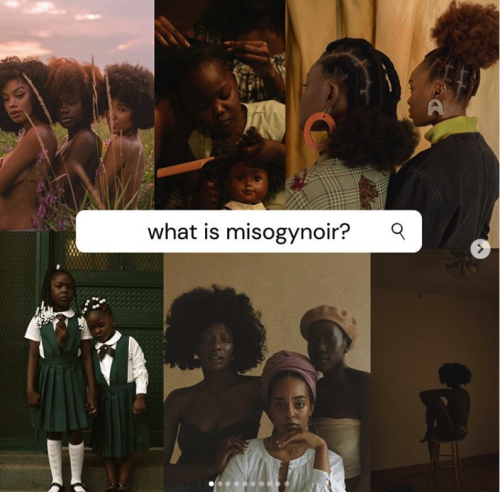
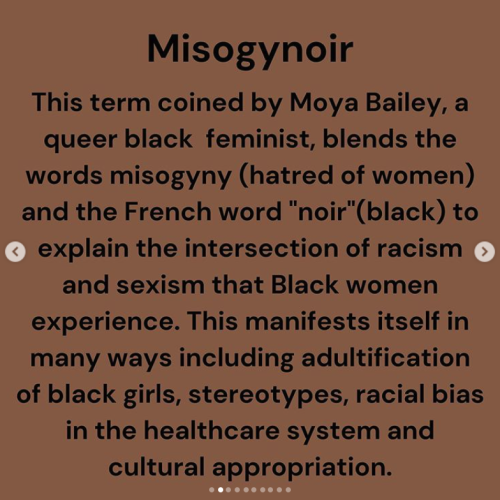
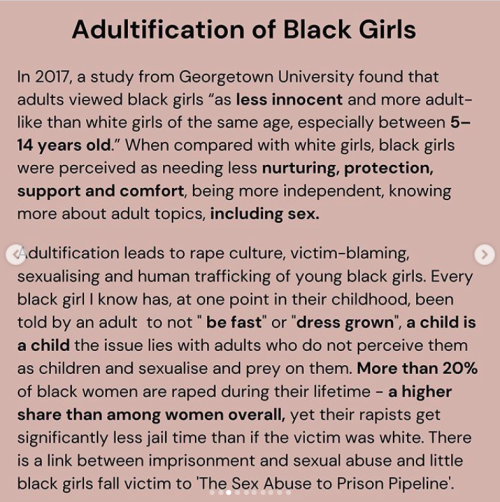
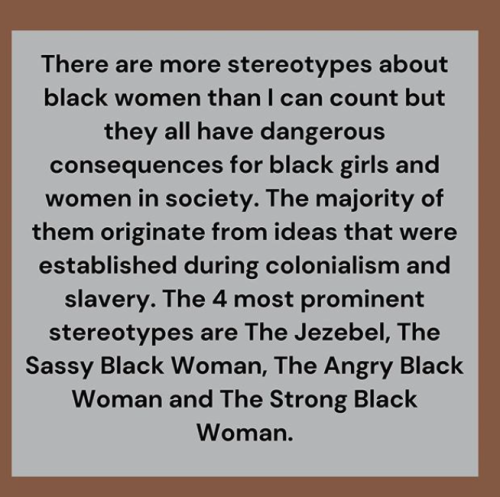
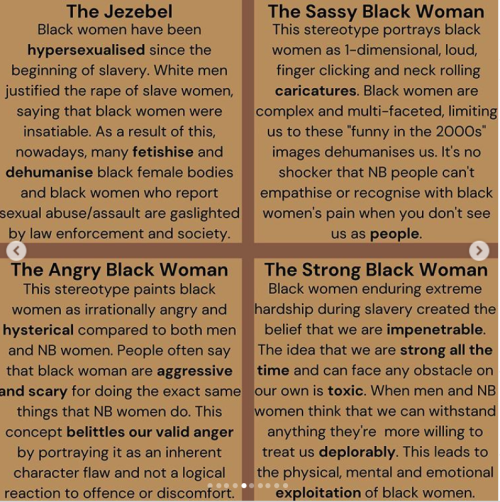



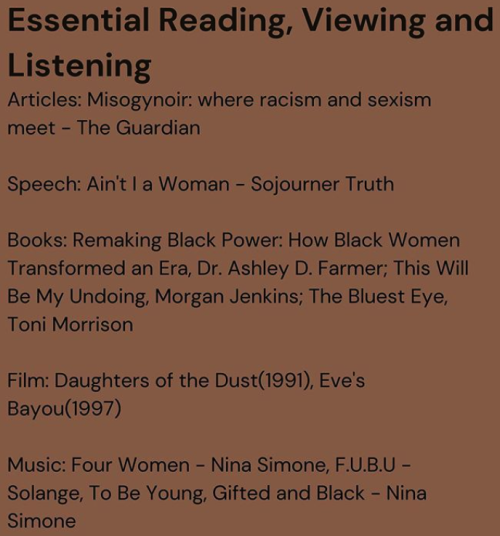
“The most disrespected person in America is the black woman. The most unprotected person in America is the black woman. The most neglected person in America is the black woman.”
-Malcolm X (1962)
(Originally found on insta from @ashleighchubbybunny)
“Take care of yourself. Take care of your family. Take care of your friends. Take care of nature. Take care of your body. Take care of your heart. Take care of your mind. Just take care of what truly matters to you. Life is too short for you not to pay attention to the things you want to love wholly and never in pieces.”
— Juansen Dizon, I Am The Architect of My Own Destruction page 91



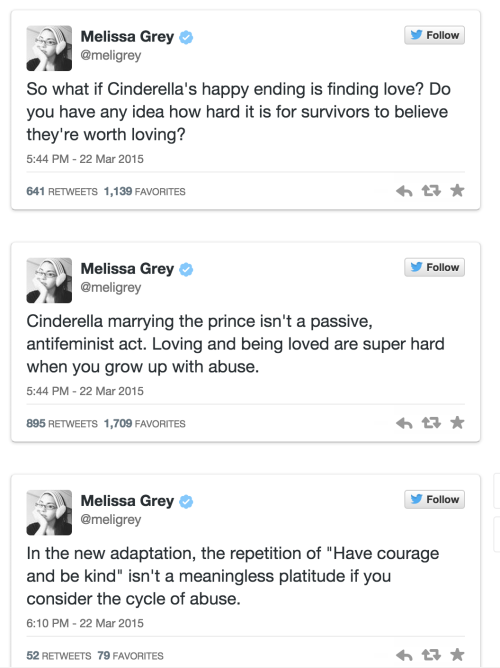

I just thought this set of tweets was really important.
Pray Without Ceasing.







OMG. The only Other person on the Internet who watches outlander! Haven't watched season 5.
Outlander S5 EP 10
I seriously LOVE the scene when Brianna "reads" Moby Dick to Bonnet and Bonnet opens up to her about his story
Felt this so much.
Loving you it´s not always being by your side, is not always thinking about you, is not always dreaming about you; it´s to be available for you, it´s to be you, become one with you, it´s to be aware of your dreams, and of mine with you, it´s allowing you to know me completely all the way to the very center of my pain, and of my love.
Loving you is not to shelter myself in you; it´s building a shelter together, with our hands, where the whole world can fit in.
Loving you is not writing you love poems; is being love when I write to you, and when I don´t.
Loving you is not expecting something from you; is simply waiting for you, in the silence, at night and in the day.
Loving you is not flattering you, it´s not enhancing your vanity, it´s not weakening you, it´s not confusing you; it´s to show you the value of your shadow, the wonder of your own light, it´s to help you to live alert, it´s to want you to fly while I watch you, absorbed, joyful.
Loving you is not just looking at you, smelling you or tasting you; it´s to look along with you at anything at the same time, to become one with your scent, to be a part of you.
Loving you is not to write that I love you; is sharing with you the best of me (love), without ever turning back, without a horizon.
Loving you it´s not renounce to my dreams for you; it´s to awake from my dreams with you, held by your hand.
Loving you is not to demand from you, it´s not forcing you, it’s not to put pressure on you, is not convincing you, is not defeating you; it´s to help you to break free from yourself, from me, from it all, it´s to give you my breath, to seduce you without any desire, nor an objective, it´s to enjoy you.
Loving you is not saying that I love you, is not thinking that I loved you, that I will love you; it´s to ask myself whether I love you, it´s to feel it, allowing it to develop in me, without even needing to tell you about it.
Loving you is not projecting ideas about you, it´s not idealizing you; it´s to see you from afar, from up close, from inside, (from you), from outside, see you beyond me.
Loving you is not to fear you, is not to own you, is not to guard you, Is not to watch you; it´s to hug you warmly, it´s to open my door to you, it´s to observe you in plain sight, in total darkness, with the eyes of my soul.
To love you it´s not to want you only when you love me, when you´re pretty, when you smile, when you kiss me, when you caress me, when you walk with elegance, when you are calm, when you are happy; it´s to accept you completely just as you are, always and everywhere, with simplicity, and joy.
Loving you it´s not to reject your flaws; it´s to become sensitive to them, without ever expecting you to change them. Loving you is not to desire to be the center of your life; it´s to lead you, if you allow me, if am able to, to the life of your core, without looking for any rewards.
Loving you is not to look at you from above, or from below, from behind, from the front; it´s to cultivate a balance that goes back and forth passing by our common center.
Creative Commons (cc) Authors: mavisu kumsal-things boowormblue ousia-poetica

Amarte no es desear ser el centro de tu vida; es conducirte, si tú me lo permites, si soy capaz de hacerlo, a la vida de tu centro, sin buscar recompensas.
Amarte no es refugiarme en tu persona; es construir un refugio juntos, con nuestras propias manos, donde pueda caber el mundo entero.
Amarte no es escribirte mis poemas de amor; es ser amor cuando te escribo, y cuando no.
Amarte no es esperar algo de ti; es simplemente esperarte, en silencio, de noche y de día.
Amarte no es estar siempre a tu lado, no es pensar siempre en ti, no es soñar siempre contigo; es estar disponible para ti, es ser tú, hacerme uno contigo, es ser consciente de tus sueños, y de los míos contigo, es permitir que me conozcas por entero hasta el mismo centro de mi dolor, y de mi amor.
Amarte no es halagarte, no es envanecerte, no es debilitarte, no es llamar tu atención, no es confundirte; es mostrarte la valía de tu sombra, la maravilla de tu propia luz, es ayudarte a vivir alerta, es querer que vueles mientras te miro, absorto, dichoso.
Amarte no es escribir que te amo; es compartir contigo lo mejor de mí (el amor), sin vuelta atrás, sin horizonte.
Amarte no es renunciar a mis sueños por ti; es despertar de mis sueños, contigo, tomado de tu mano.
Amarte no es exigirte, no es obligarte, no es presionarte, no es convencerte, no es derrotarte; es ayudarte a liberarte de ti, de mí, de todo, es prestarte mi aliento, seducirte sin deseos, ni objetivos, es disfrutar de ti.
Amarte no es decirte que te amo, no es pensar que te amé, que te amaré; es preguntarme a mí mismo si te amo, es sentirlo, dejando que se desarrolle en mí, sin necesidad alguna de decírtelo.
Amarte no es proyectar ideas sobre ti, no es idealizarte; es verte desde lejos, desde cerca, desde dentro (desde ti), desde fuera, verte desde más allá de mí.
Amarte no es temerte, no es poseerte, no es custodiarte, no es vigilarte; es abrazarte cálidamente, es abrirte mi puerta, es observarte a plena luz, en total oscuridad, con los ojos del alma.
Amarte no es exigirte, no es obligarte, no es presionarte, no es convencerte, no es derrotarte; es ayudarte a liberarte de ti, de mí, de todo, es prestarte mi aliento, seducirte sin deseos, ni objetivos, es disfrutar de ti.
Amarte no es quererte únicamente cuando me amas, cuando estás guapa, cuando te sonríes, cuando me besas, cuando me acaricias, cuando caminas con elegancia, cuando estás tranquila, cuando estás feliz; es aceptarte entera tal cual eres, siempre y en todo lugar, con sencillez, con alegría.
Amarte no es rechazar tus defectos; es hacerme sensible a ellos y hacerte sensible a ellos, sin esperar jamás que los cambies.
Amarte no es sólo mirarte, olerte, o probarte; es mirar contigo a la vez cualquier cosa, hacerme uno con tu olor, formar parte de ti.
Fusión poética (Turquía - Argentína)

This is VERY relatable.
advice for giving my life to god and let him take over? I’ve been so worried about rejection and anxiety about making friends and just been happy in life. I’ve been obsessing over it,and I need to let it go and give it to him. Any advice and favorite bible verses?🤍
Tips on How To Give Your Life To God:
- Pray 3 times a day: morning, afternoon, and night (it is not going to be easy and you are going to get lazy, but that is what is expected of you because you are only human, but you MUST gain power over your flesh) this is your communication with God prioritize it because he hears you and knows his son/daughters desires
- Read your Bible: find out what the bible says for itself (not from a sermon, devotional, friends, family, society) the bible is actually very interesting, and again the Word of God is healing and transformative. He has made the impossible possible multiple times because I was using his word. Psalm is pretty easy to read so you can start out with reading one chapter from Psalm every day.
- Clean your environment: take a break from the movies, tv shows, books, and yes music that contains negative things in them. These things consume your mind and distract you, and they might be the reason why you are thinking about rejection and anxiety when it comes to making friends. Give it a break and when YOU ARE READY (if God gives you that conviction) take it out of your life.
- Worship Sessions: Find Christian music that you like! If you don’t know the words, look it up, and just shout the lyrics as loud as possible! Have fun, dance, and cry. Worshiping is so powerful and I always feel a connection with Jesus when I worship. It is so intimate. (I like to do this in my room alone lol I do not like people watching me, but I also worship hard in church too, but I really go all out in my room)
- Fasting: DO NOT fast if you are not spiritually ready. When I was younger I tried to fast when I was not ready and it was the worst thing ever for me. You have to be intentional! You do not have to do a food fast completely, fasting is just taking something away that you know your flesh loves and cannot live without, because by doing so, you are showing Jesus he is the only one that you need to live, and you can live on the Word of God! (I do a social media, tv, music, and tv fast to cleanse my mind) You can do a 5 hr fast, 6am-6pm, water fast, a full day, a week, whatever you feel comfortable with but just take baby steps. but GIIIIRRRL fasts are the biggest ways to grow closer to God and get big prayers answered (if it is His will for you), you feel untouchable coming out of a fast.
*Again these things will feel weird first starting out, its like eating vegetables, it feels weird, but its good for you plus growing closer to God is beyond being just good for you, its life-changing-- YOU ARE about to be on the winning team*
Fav. Verse when I am feeling tired, scared, discouraged:
28 Do you not know? Have you not heard? The Lord is the everlasting God, the Creator of the ends of the earth. He will not grow tired or weary, and his understanding no one can fathom. 29 He gives strength to the weary and increases the power of the weak. 30 Even youths grow tired and weary, and young men stumble and fall; 31 but those who hope in the Lord will renew their strength. They will soar on wings like eagles; they will run and not grow weary, they will walk and not be faint.
(Isaiah 40: 28-31)





Very important reminders.